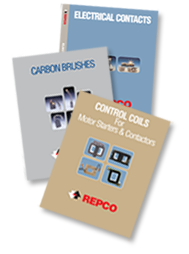
- Electrical Contacts
Electrical Contacts
- Carbon Brushes
Carbon Brushes : Brush Reference
- Control Coils
Control Coils
- Other Contactor Parts
- More
- Search
- Auxiliary Contacts
Auxiliary Contacts
- Shunts
Shunts
- Springs
Springs
- AC Contactors & Starters
AC Contactors & Starters
- DC Contactors
DC Contactors
- Drives
Drives
- Fuses
By: David Howard | G+
Electrical contacts help to make furniture

The days of individual craftsman laboring to create a single chair, table, hutch, or cabinet are nearly over. Computer controlled cutters, automatic sanders, and assembly lines reign supreme. A majority of furniture today, isn’t manipulated by humans until it’s time for final fabrication: such as sewing, inserting springs, or final inspection. Even though modern, mass-produced furniture still takes a little bit of hand finishing, the majority of the process is now highly automated. And these automated systems use motors and controls.
Automation, assembly lines, and CNC machines
Large CNC machines carefully route out frame and finish components. Wood parts are often loaded onto hanging conveyor belts for painting and finishing. Some components are passed through industrial ovens for drying. Fabrics, leather, and foam are pattern carved into shape by automated cutters. Even final furniture wrapping for shipping or flat pack out (for unassembled furniture) utilizes automation via robotics.
As with all large-scale industrial operations using heavy-duty machinery, you’ll find electrical contacts playing a large part in their motor controls. From ABB and Eaton to Siemens and GE you’ll find major OEM controls throughout the furniture manufacturing process. And it’s probable that Repco can provide OEM compatible replacement electrical contacts at a lower cost to keep the furniture assembly flowing and overall manufacturing costs low.
There are no comments. Be the first to comment.
Leave A Comment Now
International: 856-762-0172
Domestic: 800-822-9190
Literature Request Or Download
Click here to download or browse our Electrical Contact, Carbon Brush, or Control Coil catalogs online.

Repco
100 Sonwil Drive
Buffalo NY 14225Repco Quick Contact
We are excited to announce that REPCO has merged with USA Industrials.
For all inquiries, please contact us at service@usaindustrials.com or give us a call at 800-822-9190.
We appreciate your understanding and look forward to serving you better with our expanded capabilities.
- Carbon Brushes